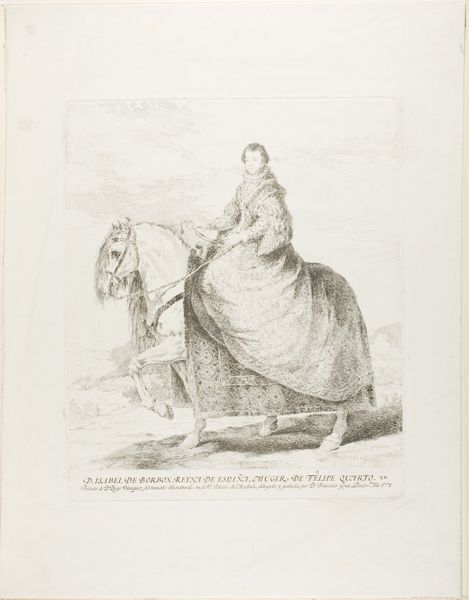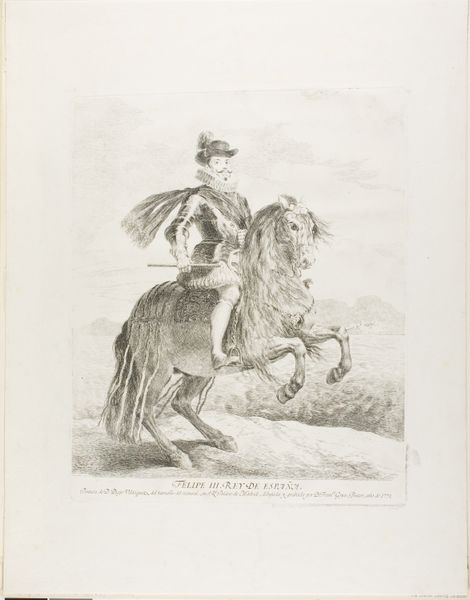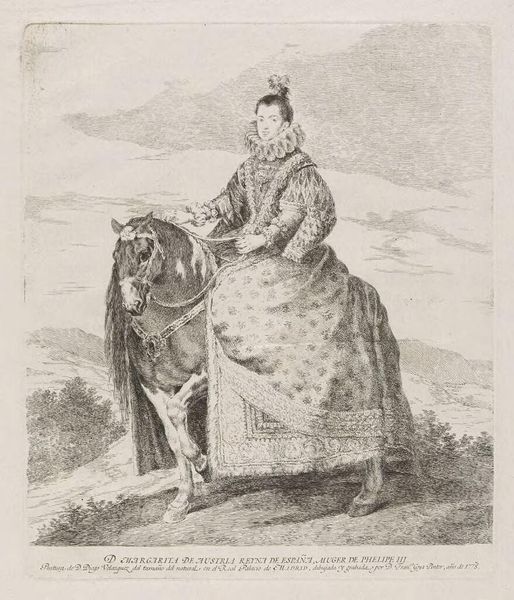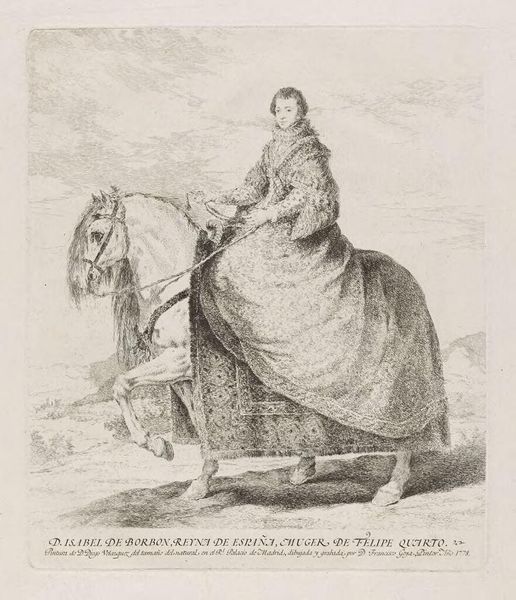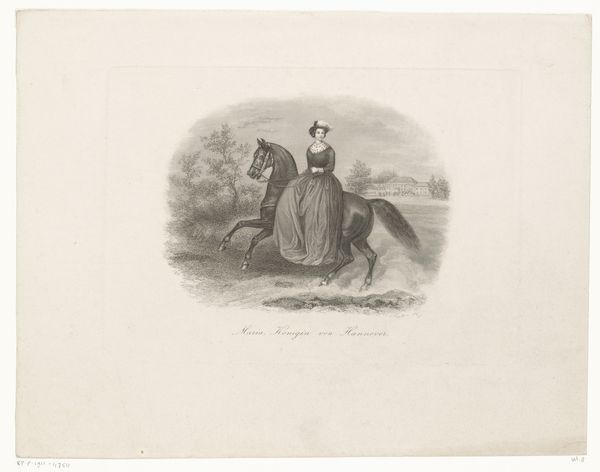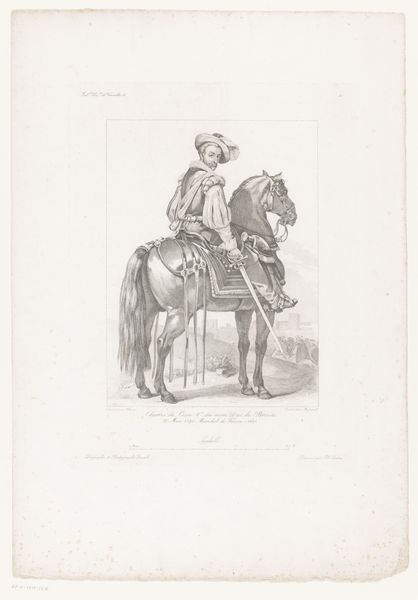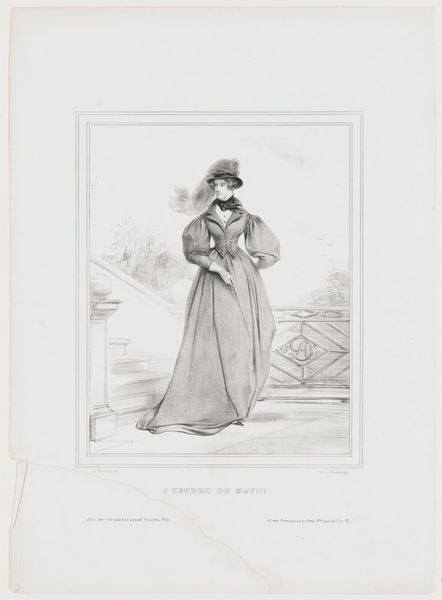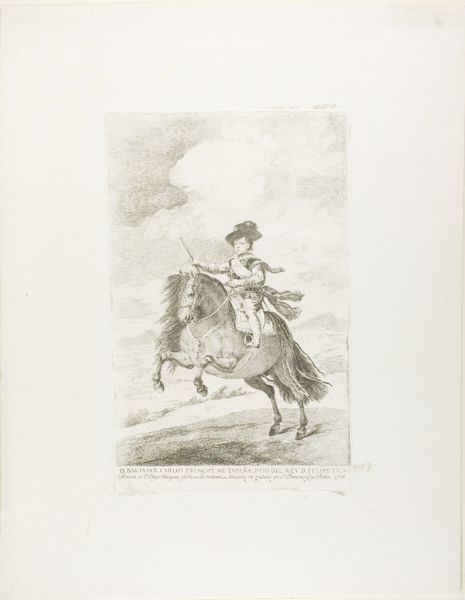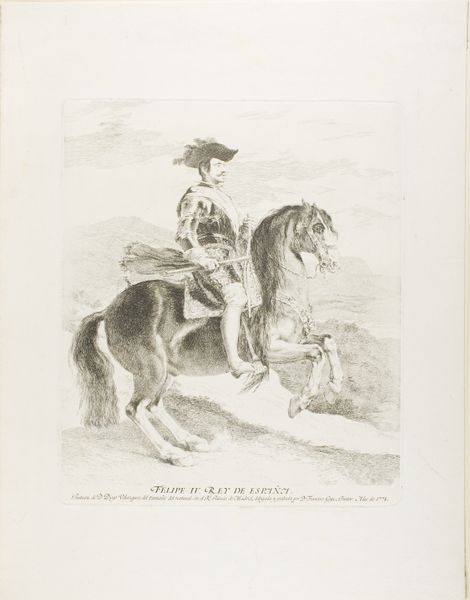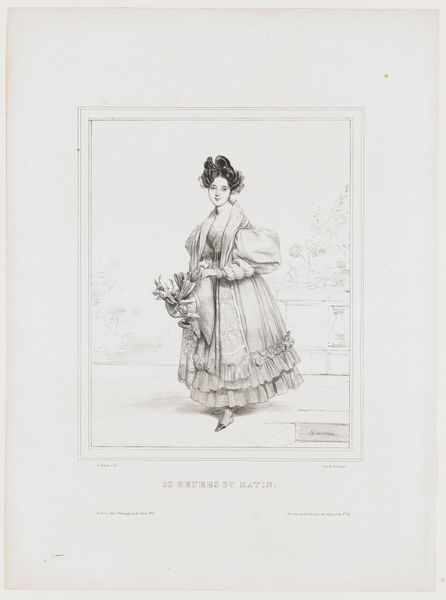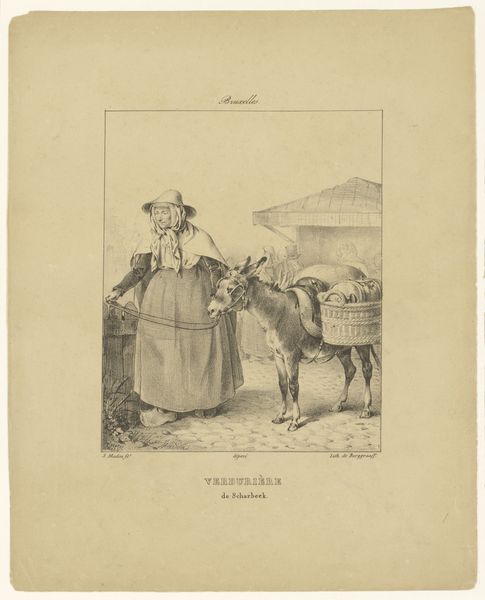
drawing, print, etching, paper
#
portrait
#
drawing
# print
#
etching
#
etching
#
paper
#
history-painting
Dimensions: 349 × 310 mm (image); 370 × 310 mm (plate); 554 × 433 mm (sheet, folded at bottom)
Copyright: Public Domain
Editor: Here we have Goya's "Margaret of Austria" created in 1778, using etching on paper. It’s currently housed here at the Art Institute of Chicago. The delicate lines and subdued tones create a sense of historical distance, but the subject herself has an arresting presence. How would you interpret this work, particularly focusing on its formal elements? Curator: Indeed. From a formalist perspective, let us examine the interplay between line, texture, and composition. Goya's strategic use of line weight delineates form and implies spatial depth. Observe how the meticulous detailing in Margaret’s dress contrasts with the more simplified background. What impact does that contrast have on the composition as a whole? Editor: It definitely draws the eye towards the figure. The detailed dress and ruff create a strong focal point. Also, the shading of the horse makes it a dynamic element, instead of a static pedestal. Curator: Precisely. Note the relationship between the positive space occupied by the figures and the negative space surrounding them. Does that create a sense of balance, tension, or something else? Also, how does Goya manipulate light to achieve a sense of volume and form? Is there a symbolic aspect, or do you think he did this purely as an artistic practice? Editor: I’d say the subtle use of light gives depth, particularly on Margaret’s face, and draws attention to her expression. Maybe not symbolic but purely visual. Now thinking about the forms in front and behind the Duchess, they all act together to point the viewer to the Duchess’s face. Thank you; I see so many layers I hadn't seen! Curator: The power of close examination reveals the underlying structure and intention. Goya expertly uses line and tone, establishing formal coherence, revealing deeper meaning, and creating a potent viewing experience.
Comments
No comments
Be the first to comment and join the conversation on the ultimate creative platform.
